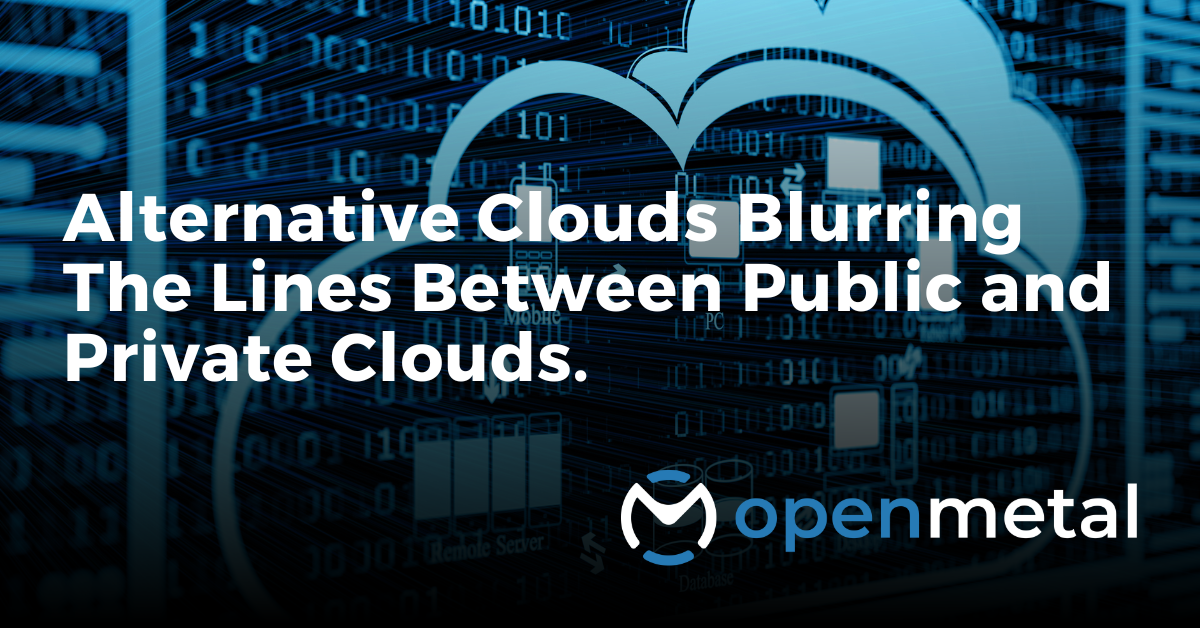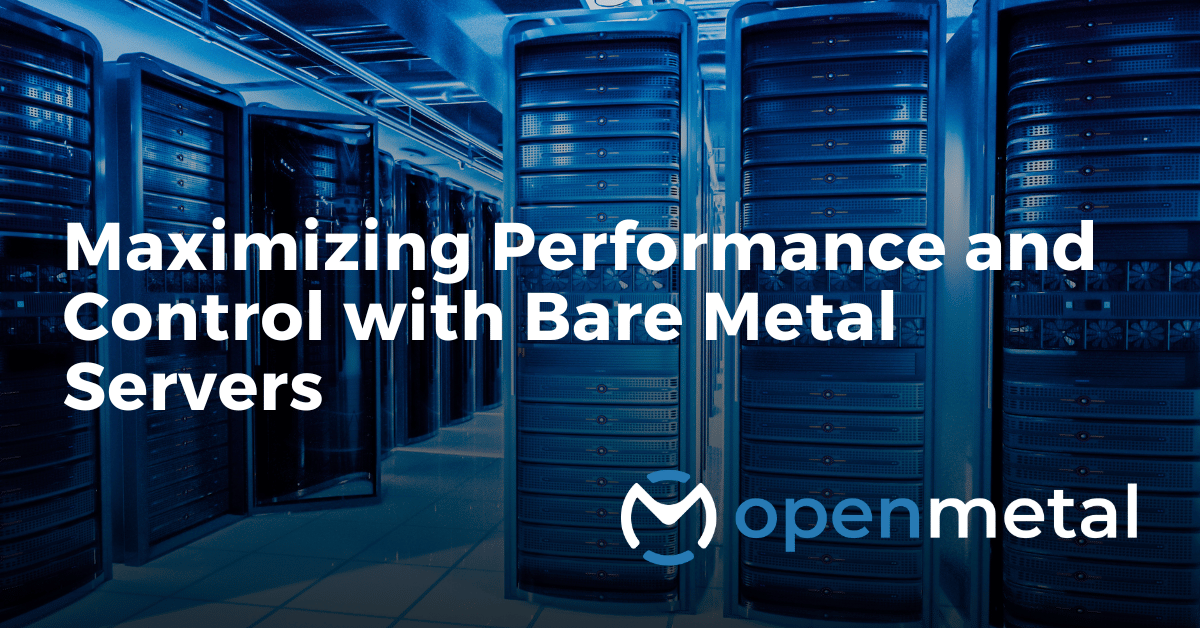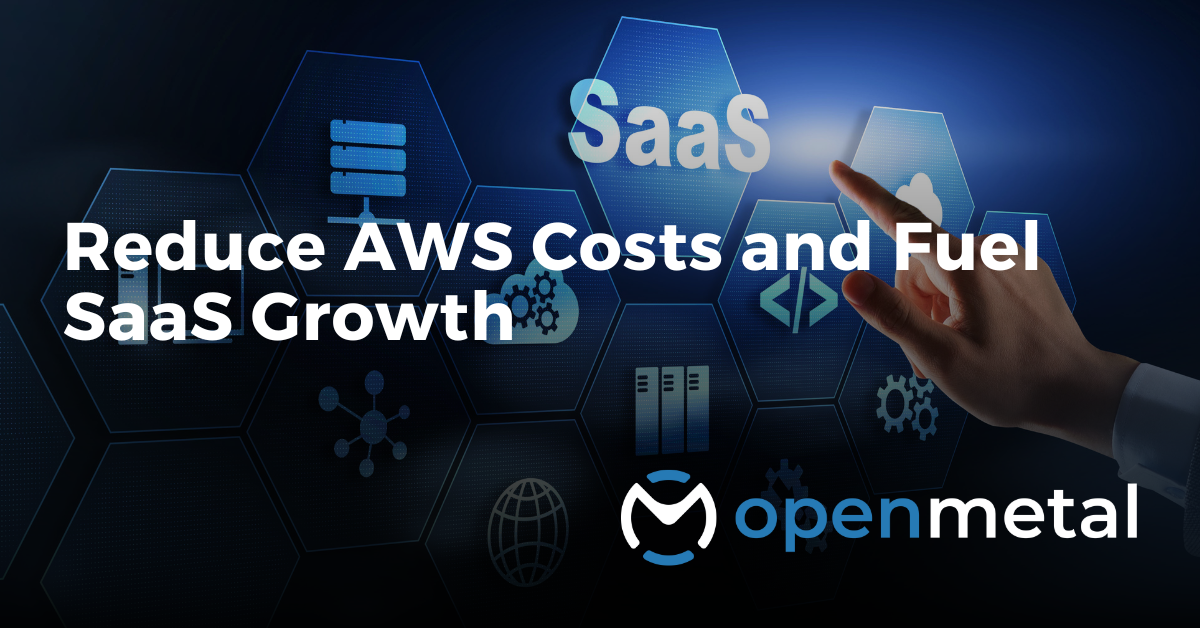Do you remember the days when clunky physical servers filled office closets, humming away and requiring constant maintenance? With the evolution of cloud computing, a new player entered the scene – virtual machines (VMs). These efficient, software-powered servers are shared across a vast network, changing the way businesses handle computing needs.
VMs offer flexibility and cost-effectiveness, but for tasks that demand extra muscle, bare metal servers step in. Picture having a dedicated physical server exclusively at your disposal, brimming with processing power, memory, and storage. No resource-sharing, no virtualization layers – just pure performance, security, and control.
So, why might you consider opting for a bare metal server?
- Raw Speed for Demanding Tasks: Whether you’re crunching massive datasets, running intricate simulations, or fueling high-traffic applications, bare metal servers breeze through these tasks.
- Tight Security: In scenarios where data privacy is non-negotiable, the physical isolation of a dedicated server offers unparalleled peace of mind.
- Full Control: Tailor every aspect of your server, install custom software and operating systems, and fine-tune for optimal performance.
However, before you jump on the bare metal bandwagon, there are a few things to consider.
While bare metal servers offer exceptional performance benefits, they come with added responsibilities. You’ll need to manage the server, handle security updates, and foot the bill for the entire machine, even during idle periods. Moreover, setting up a bare metal server requires technical expertise and can be pricier than virtual machines.
While there are some prerequisites for success, if your business runs mission-critical applications, handles sensitive data, or demands top-tier performance, a bare metal server might be the way to go. Ultimately, it’s about weighing the performance and control benefit of bare metal cloud against the added responsibilities and costs.
A Deep Dive Into Bare Metal Servers
Technical Specifications
Imagine stepping up from a shared living space to owning an entire house in the digital realm. This is the essence of bare metal servers. They provide you with dedicated physical machines, removing the need to share resources with “virtual neighbors.” But to think of them as merely upgraded traditional dedicated servers would be an oversimplification.
Consider dedicated servers as akin to renting an entire apartment. You have the place to yourself, but maintenance and overarching control rest with the landlord.
Bare metal servers, on the other hand, are like purchasing your own home. You wield control over every aspect (CPU, memory, storage, network), paired with the responsibility to ensure everything operates correctly. While both options offer privacy and control, bare metal servers take customization to the next level:
- CPU Options: Select from robust multi-core processors for heavy-duty tasks or opt for specialized GPUs for graphics-intensive applications and AI projects.
- Memory Solutions: Equip your server with ultra-fast RAM to ensure seamless performance.
- Storage Choices: Decide between swift SSDs for quick data retrieval or spacious HDDs for storing large quantities of data.
- Network Capabilities: Benefit from dedicated bandwidth, sidestepping the issue of “noisy neighbors” impacting your speed.
Bare metal servers are available in various configurations to suit different needs:
- General-purpose: Ideal for standard applications like web apps and databases.
- High-performance: Designed to tackle intensive tasks such as scientific simulations or big data analytics.
- GPU-accelerated: Optimized for tasks that require heavy graphics processing, AI, and machine learning.
For business leaders, IT professionals, or developers, the adaptability and control offered by bare metal servers can be a game-changer for handling performance-sensitive projects.
Benefits and Use Cases
Bare metal servers aren’t just another choice in the cloud landscape; they redefine the playing field for high-demand applications. But what sets them apart?
Envision a dedicated server, but supercharged: bare metal delivers unparalleled performance for tasks such as high-performance computing (HPC), intensive data analysis, and AI development. Say goodbye to shared resources and “noisy neighbors” – you get undiluted, dedicated resources for your projects.
Concerned about security and compliance? Bare metal excels in these areas. Offering complete physical separation, it ensures your data remains protected, easily complying with even the most rigorous standards. Moreover, you gain the freedom to customize security settings to fit your exact requirements.
Craving flexibility? Bare metal breaks free from the constraints of generic solutions. Install your preferred software stack, tailor the hardware resources to meet your specifications, and unlock full customization potential. This level of detail gives developers the power to fine-tune their applications for peak performance.
Facing fluctuating scaling needs? Bare metal is up to the task. It’s built to accommodate both spontaneous surges during peak times and steady, long-term expansion. Scale your resources to match the pace of your business’s growth, ensuring you’re never left wanting for capacity.
However, as Uncle Ben said, with great power comes great responsibility. Managing bare metal servers demands a higher level of technical know-how compared to standard cloud services. They’re not a universal solution, and the initial investment likely surpasses that of virtual machines.
Yet, when weighing the advantages – peak performance, superior security, and absolute control over your computing environment – the trade-offs can be worth it. For businesses running mission-critical operations or looking for a competitive advantage, the benefits of bare metal servers often tip the scales in their favor.
Comparison With Other Cloud Solutions
Bare metal servers stand out for their unparalleled combination of performance and customization. But how do they compare to other cloud computing options?
- Virtual Machines (VMs): VMs are the cloud’s familiar workhorses, akin to renting an apartment. While you have your own space, resources are shared among tenants. This setup offers cost savings but can lead to performance issues if “neighbors” consume more than their fair share of resources.
- Containers: Containers are compact, mobile units for your applications, offering an efficient solution for deploying microservices. They’re streamlined and quick, but since they operate at a level removed from the hardware, they might not offer the flexibility and power needed for more resource-intensive tasks.
- Platform as a Service (PaaS) and Serverless Computing: These services remove the complexity of managing infrastructure, similar to staying at an all-inclusive resort. They provide a comprehensive environment for development and deployment, simplifying the process but at the cost of limited customization. You’re there to enjoy the amenities, not redesign the landscape.
In this landscape, bare metal servers are akin to owning a mansion in the cloud. They provide exclusive access to the hardware, allowing for:
- Peerless Performance: With no resource sharing, you avoid common bottlenecks, making bare metal ideal for high-performance computing (HPC), extensive data analysis, and AI projects.
- Superior Security: The physical isolation of your server offers a high degree of security and compliance, unlike shared environments.
- Complete Customization: Unlike VMs or containers, bare metal servers can be tailored precisely to your specifications, offering a unique level of customization.
However, the benefits of bare metal servers come with their own set of challenges, including the need for technical expertise to manage them and potentially higher initial costs compared to other cloud options.
When deciding on the best cloud solution, consider your priorities:
- If unparalleled power and customization are what you need, bare metal servers are the way to go.
- For those valuing cost-efficiency and simplicity, VMs or containers may be more appropriate.
- If your focus is on rapid development and scalability without the hassle of infrastructure management, PaaS or serverless computing offers a compelling solution.
Ultimately, the choice depends on striking the right balance between performance, flexibility, and cost to meet your specific objectives.
Bare Metal Cloud vs Traditional IaaS
Thinking that opting for bare metal means navigating the cloud alone? Not quite! Bare metal servers, known for their unparalleled control, also boast impressive compatibility with traditional Infrastructure as a Service (IaaS) offerings.
Looking to pair your high-performance server with databases or AI tools? It’s entirely feasible! Leading cloud providers have made strides in bridging these worlds, enabling you to harness the strengths of both. A hybrid approach is common for our OpenMetal clients, combining the robust capabilities of hosted private clouds with the power of dedicated bare metal servers. Bare metal integrated with our hosted OpenStack clouds is another powerful and popular possibility.
And if you’re keen on tapping into this power but wary of the operational demands, there’s good news: managed bare metal services are at your disposal. These solutions take on the burden of day-to-day management, allowing you to direct your attention elsewhere.
So, whether you’re a tech enthusiast eager to dive deep or someone who appreciates a more hands-off approach, the bare metal cloud presents a potent and adaptable platform for your computing needs.
Choosing the Right Bare Metal Solution
The appeal of bare metal servers is clear: unparalleled power, complete control, and robust security. However, diving into this territory requires thoughtful preparation. So, what’s the best way to approach this promising yet intricate field?
Identify Your Requirements
Start by getting a clear picture of your needs:
- What applications will these servers host?
- Are you looking for high performance for tasks like real-time analytics or AI?
- How critical are security and compliance for your operations?
- Is your focus on quick scalability or a reliable, long-term setup?
Answering these questions will help pinpoint the ideal server configuration and the most suitable provider.
Evaluating Providers
With your requirements in hand, assess potential bare metal providers by considering:
- Hardware Flexibility: Do they offer the CPU, memory, and storage options you need?
- Pricing Structure: Is their pricing model – whether pay-as-you-go or reserved instances – compatible with your financial planning and usage expectations?
- Global Presence: Are their data centers located where you need them, providing the low-latency connections you require?
- Support Services: What level of technical support is available? Look for 24/7 access and proactive management options.
Choosing the Right Model
Bare metal servers can be set up on-demand for flexibility or dedicated for more extended periods for stability. On-demand is perfect for temporary needs or experimentation but might be costlier over the long haul for continuous operations.
Dedicated servers, while offering a consistent environment and predictable pricing, may not provide the same level of flexibility as on-demand solutions. Weigh your operational patterns and financial considerations to strike the right balance.
Management Considerations
Running bare metal servers demands expertise in server management, security, and networking. If your team isn’t equipped with these skills, think about opting for managed services. These providers take care of the operational aspects, allowing you to concentrate on strategic business activities.
Prioritizing Security
While bare metal cloud servers enhance security, maintaining a secure environment is ultimately your responsibility. Implement stringent access controls, encryption, regular vulnerability assessments, and security audits. Make sure your provider supports your security efforts with the necessary tools and features.
Selecting the appropriate bare metal server solution involves a thorough understanding of your needs, a careful comparison of providers, and informed decisions regarding management and security. By taking these steps, you can fully leverage the benefits of bare metal servers.
Spotlight:
XL v2.1 Dedicated Server
Intel Xeon Gold 6338 Processor with 1TB RAM
Available in our US and EU data centers
- Processor:
64 Cores, 128 Threads2.0/3.2Ghz
1024GB DDR4 3200MHz RAM - Storage:
4x 6.4TB NVMe
960GB Boot Disk
- Network:
80Mbps included bandwidth
2X10Gbit
Case Studies and Real-World Examples
Bare metal servers aren’t just theoretical powerhouses; they’re already driving innovation and success across diverse industries. Let’s explore some real-world examples:
01
Gaming
Take Ubisoft Montreal, the renowned developer behind Assassin’s Creed and Far Cry. They adopted bare metal servers from OVHcloud to power their game development pipelines. The result? A 30% performance boost in rendering and simulation tasks, leading to faster development cycles and smoother gameplay experiences for millions of gamers worldwide.
02
Financial
In the fast world of finance, JPMorgan Chase relies on bare metal from IBM Cloud to run their high-frequency trading applications. The dedicated resources and ultra-low latency offered by bare metal servers enable them to make split-second decisions with confidence, gaining a crucial edge in the competitive market.
03
Scientific
Pushing the boundaries of scientific research, the European Organization for Nuclear Research (CERN) utilizes bare metal from Google Cloud to analyze the massive datasets generated by the Large Hadron Collider. This allows them to process petabytes of data efficiently and uncover groundbreaking discoveries in particle physics.
04
AI
The field of artificial intelligence thrives on raw computational power. OpenAI, the research company behind the revolutionary GPT language model, utilizes bare metal servers from Microsoft Azure for their AI training and research. This grants them access to the latest hardware and scalability, accelerating their development of cutting-edge AI solutions.
The Benefits are Real
These examples showcase how bare metal servers deliver tangible benefits across various applications. From unmatched performance for demanding tasks like gaming and finance to enhanced security for sensitive data and cost savings through optimized resource allocation, bare metal offers a compelling value proposition.
Remember, the key is choosing the right solution for your specific needs. By understanding your workload requirements and evaluating the available options, you can unlock the potential of bare metal cloud services and empower your business to achieve its goals.
Wrapping Up – Is Bare Metal for You?
Bare metal servers aren’t just a tech novelty; they’re a powerful tool for businesses seeking peak performance, enhanced security, and ultimate control in the cloud. From gaming giants like Ubisoft to scientific pioneers like CERN, diverse organizations are leveraging a bare metal cloud environment to achieve great results.
Whether you’re tackling demanding workloads, handling sensitive data, or optimizing your cloud spend, bare metal offers a solution worth considering. Remember, the ideal cloud solution depends on your specific needs. We encourage you to explore further, evaluate your options carefully, and discover how bare metal can elevate your cloud journey to new heights.
Ready to explore bare metal as a service? OpenMetal gives you all the benefits without the hardware overhead.
Read More on the OpenMetal Blog
Bare Metal: A Critical Component of the Modern IaaS Strategy
Integrating bare metal servers into an IaaS strategy empowers businesses to leverage the performance advantages, customization options, enhanced security, and compatibility with specific workloads offered by dedicated hardware resources.

ClickHouse is an open source columnar database management system created by Yandex in 2016. ClickHouse was designed to provide users with a rapid and efficient system for processing large-scale analytical queries on enormous volumes of data. Today, organizations use…Read More
Using OpenStack Ironic to Streamline Bare Metal Management
Ironic is a component of the OpenStack framework that specializes in provisioning and managing bare metal servers instead of virtual machines. It can be utilized independently or as part of an OpenStack Cloud setup.






































